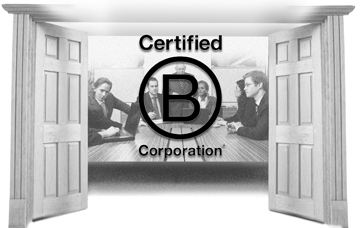Mid-Atlantic Health Law TOPICS

The New Maryland Benefit Corporation
On October 1, 2010, Maryland will become the first state to recognize a new corporate form called a "benefit corporation." The law that authorized this new type of entity passed Maryland's Senate unanimously, and passed the House of Delegates by a vote of 135-5. While such overwhelming votes certainly evidence strong legislative support, it is still too early to determine the extent to which benefit corporations will be utilized to accomplish "good deeds" in any arena, including health care.
One aim of the legislation is the infusion of capital by socially minded entrepreneurs into companies that have specific social goals. The new law accomplished this by protecting the directors of such corporations from stockholder lawsuits grounded upon a failure to maximize financial profit. In effect, an investor in a benefit corporation is put on notice that maximization of profit is not necessarily the guiding rule for this type of company.

A. Director Duties
Now, by using a benefit corporation, directors will be free to think beyond maximizing profits for owners, and, instead, to consider "general public benefit." Those exact words are defined in the statute as "a material, positive impact on society and environment, as measured by a third party standard, through activities that promote a combination of special public benefits."
Generally, directors are supposed to take actions that they believe are in the best interests of the corporation on whose board they serve. However, Maryland's new law provides that in determining what a director believes to be in the best interest of a "benefit corporation," the director should consider the effect the action in question will have on the following:
1. The interests of the benefit corporation's stockholders;
2. The interests of the benefit corporation's employees;
3. The interests of the benefit corporation's customers as beneficiaries;
4. Community and societal considerations; and
5. The local and global environment.
Of course, since Maryland is the first state to endorse this type of entity, there is not yet any law here or elsewhere to help people know how the new statutory framework will be interpreted. For example, there is no guidance on how, or if, the five factors identified above are to be weighed.
B. Process Requirements
Both new and existing corporations can obtain benefit corporation status. Existing corporations must have stockholder approval to convert into a benefit corporation. Every benefit corporation must include in its charter the statement that the corporation is a "benefit corporation," and this statement must appear at the heading of every charter document and on each stock certificate.
Additionally, a benefit corporation must create an annual benefit report that must be filed with the State, distributed to stockholders and posted on the entity's website describing, among other things, the following:
1. The way the benefit corporation pursued a general public benefit during the previous year;
2. The way the benefit corporation pursued any public benefit specified in its corporate charter;
3. A description of any circumstances that impeded the benefit corporation from creating a public benefit; and
4. An assessment of the benefits to society and/or the environment in accordance with a third party standard applied consistently with the prior year's report.
This last requirement raises the question of who will be creating and applying these third-party standards, and not surprisingly, one of the proponents of Maryland's new law was a Pennsylvania company that certifies socially responsible companies.
C. Conclusion
The bottom line is that Maryland now offers a new "choice of entity." However, those tempted to do business as a Maryland "benefit corporation" will have to analyze whether the choice is the right fit for the task at hand, and weigh any perceived benefits against the uncertainty and expense that will likely be incurred in forming and operating such an entity.